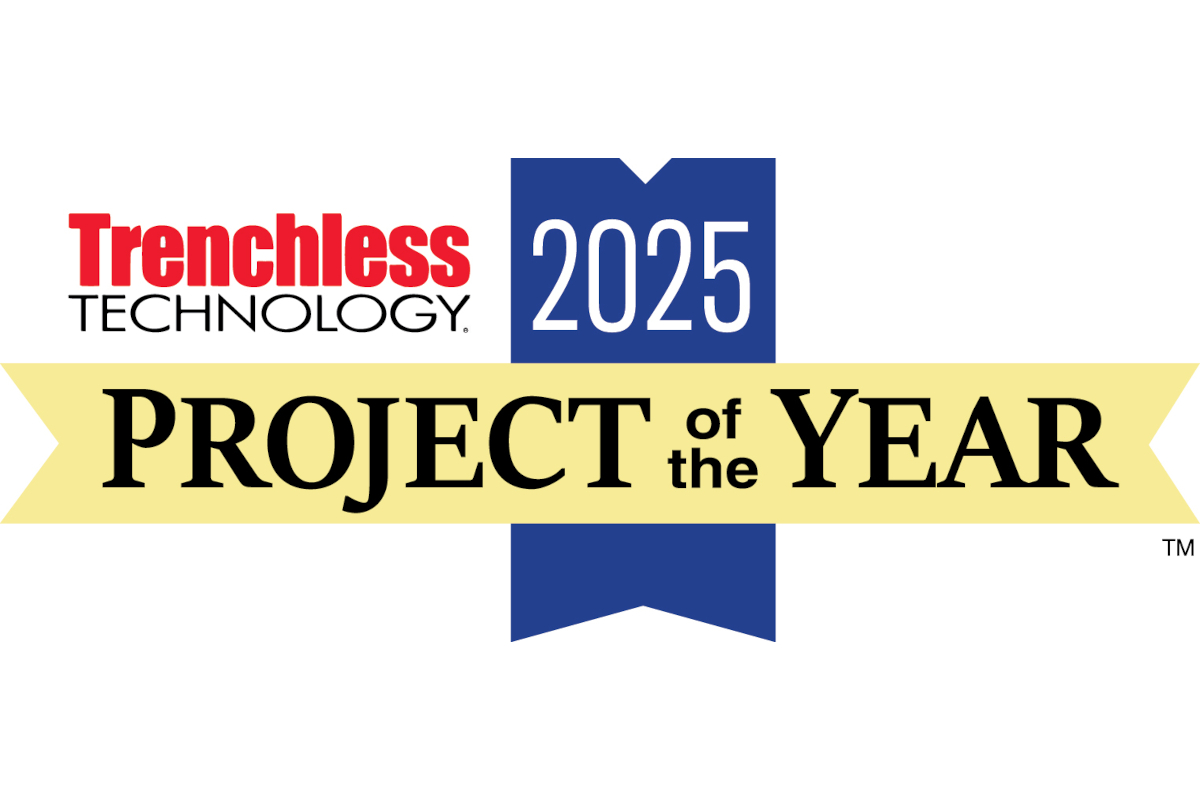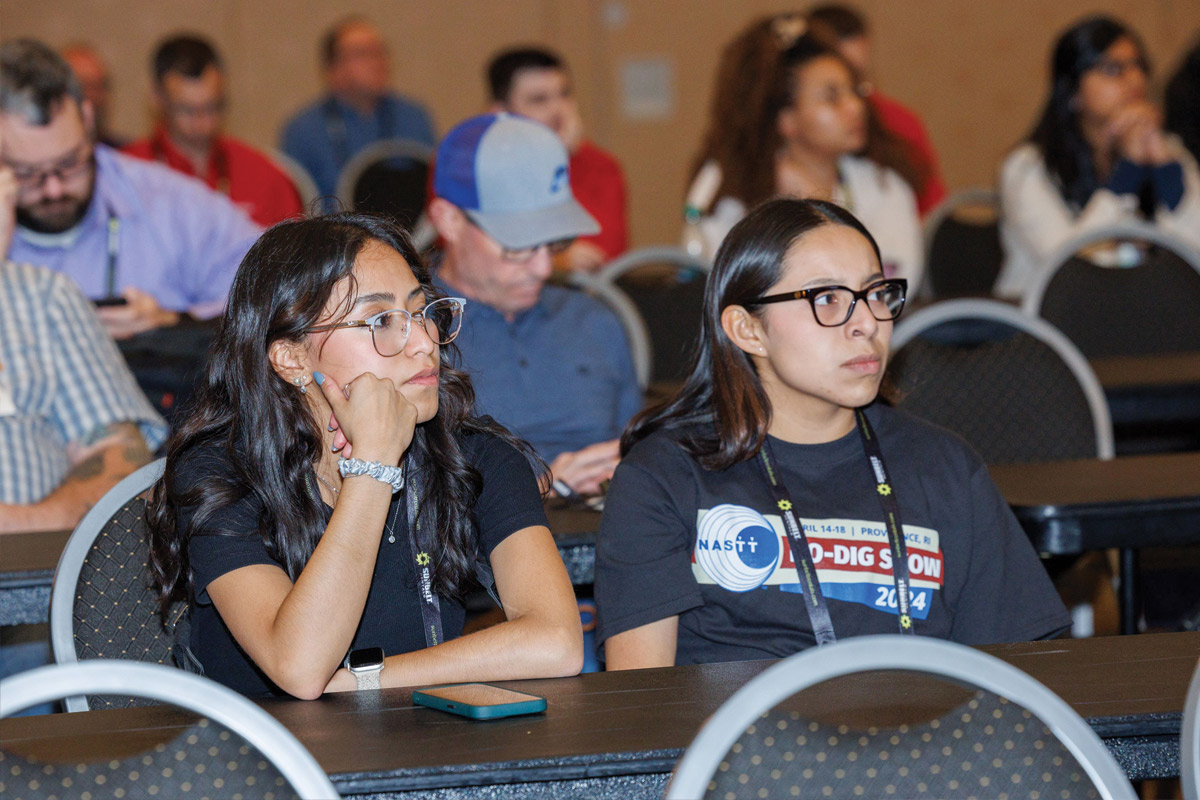
2025 Trenchless Technology Canada Editorial Roundtable
Checking the Pulse of Canada’s Trenchless Sector
To gauge the pulse of the trenchless industry in Canada, Trenchless Technology Canada periodically conducts an editorial roundtable that features a cross section of the industry. We took the opportunity to host our latest roundtable at the NASTT 2024 No-Dig North in Niagara Falls.
The discussion included the perspectives of an engineer and two owners. The panel’s expertise amasses more than 80 years of combined knowledge in the trenchless industry. A fourth member of the panel – a contractor – did not make the interview due to a scheduling conflict.
During the hour-long discussion we discussed many facets of the sector including where it is growing, the challenges the sector is facing and what’s on the horizon. What appears here is a truncated recap of that discussion.
Joining us for the roundtable are:
Kevin Bainbridge, C.E.T., vice president, Robinson Consultants, Hamilton, Ontario
Bainbridge has 25 years of experience in the trenchless sector, first with the City of Hamilton, developing and managing its rehabilitation programs and then for the last 13 years with Robinson Consultants providing trenchless engineering solutions for municipal and private clients.
Tony Kovacevic, manager of sewers, City of Burnaby, British Columbia
Kovacevic has worked for the City of Burnaby for 29 years. About 23 of those he’s worked in trenchless, starting as the rehabilitation and inspection technologist putting programs together for the city. The last 15 years he’s worked as the sewer manager dealing with all the rehabilitation, maintenance and construction of the sewers.
Harry Krinas, senior project manager, engineering services, City of Hamilton, Ontario
Krinas started with the city in 2005 working with Bainbridge. Today he is charged with managing the inspection and rehabilitation programs for the city.
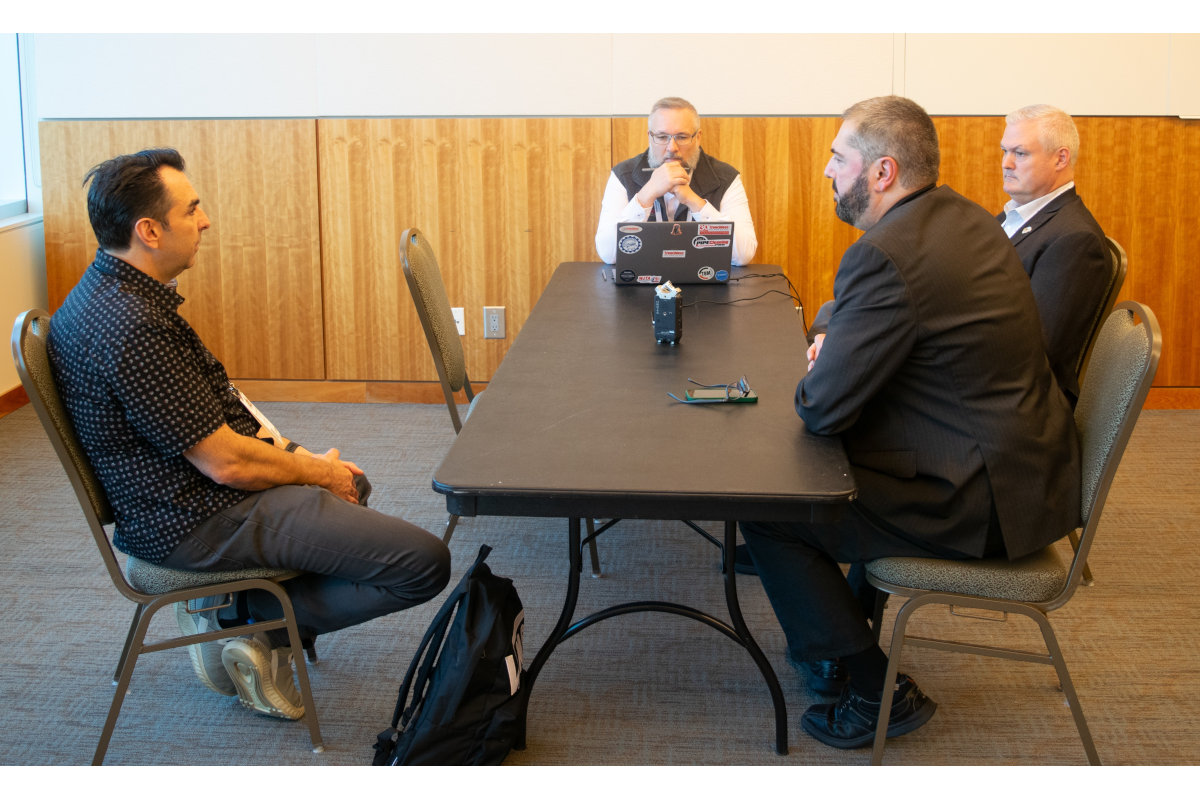
How would you rate the trenchless technology sector today?
KOVACEVIC
The health is good and positive as a whole. There are certain areas that are thriving in trenchless and there is a lot of trenchless activity going on. Where we are out west, it’s moving forward but it’s a slow move forward. It would be nice to see it move a little bit faster. It just takes longer to adopt newer technologies and have the capability for contractors to provide the services.
BAINBRIDGE
In the 25 years that I’ve been in the trenchless business, I’ve seen the market accelerate the greatest over the past number of years. The volume of municipal and utility owners are rapidly increasing [their] recognition of the value of the trenchless technology industry in the capacity to support new growth. [For example] where they are building new infrastructure to support growth and develop enough housing…in the urban centers. You get into tunnelling and directional drilling…to dramatically support the capacity for them to move as quick as they need to. I think there is a real growing recognition of this and it’s changing the dynamics of the market.
On the rehabilitation side, there are more and more who are appreciating the value and understanding that a lot of these technologies on the rehab side are not band aids. They are full renewal of those structures, not just a temporary fix. There is a real ground swelling going on in the industry now that I have not seen in the 25 years that I have been in the industry. It’s awesome to see. It’s one of the reasons that I left municipal work for the private sector 14 years ago. I saw this happening at some point. I saw the need that this was going to happen. I was confident it was going to happen. It was just a matter of when it would occur. It’s awesome to see it now starting to occur over the last number of years.
KRINAS
I agree with Kevin. I’ve seen tremendous growth in the market. The availability of products out there, not only for the lifecycle management of existing assets but also for new installations. Tunneling, microtunnelling those kind of things and the availability of the products locally here, and the contractors able to do those projects.
Initially when trenchless came out, it [happened] side-by-side with what the market was experiencing as it related to asset management and the new ways of managing infrastructure. I think it really helped that the recognition was there initially for cost effective ways of extending the life of existing assets. Now we are seeing a lot more engineering acceptance of trenchless technologies and methodologies. As Kevin said, it’s not a repair, it’s actually a new asset you are creating using and existing asset (in most cases) and there are other ways to address new installations.
Especially now, I think that trenchless has good applicability for municipalities and utility owners when you look at legislation changes around soils and managing those soils, as well as other legislation related to environmental impacts. There is a lot of opportunity in the market, and it looks like it is responsive. What’s lacking right now, from my perspective, are utility owners, especially municipalities, that are not as participatory in research and enabling technologies to be tried out and flourish. I think we’ve lost that a little bit. I’d like to see that come back. I don’t know how.
That’s an interesting point. Is there enough investment from owners in terms of allowing new techniques or technologies into the market?
KOVACEVIC
I agree totally, that’s probably the biggest challenge. It’s always been a challenge. You have municipalities that have people who have always done things a certain way and [there is a] reluctance to change. It shows that certain engineers and key decision makers are reluctant to try newer options for rehabilitation. More research must be done on their part and to participate in the research to show that it is beneficial. The information is all there that shows the benefits of trenchless, costs are less, the social impact, the environmental impact, the ability to easily work around all the new project permitting that is required all over the world.
BAINBRIDGE
It’s a good point and I agree. When I talked about the ground swell in the industry, as Harry mentioned, the new products and the advancement of those products. That is something that I have seen dramatically increase in the last several years. There are new and innovative products coming to the table, as well as advancements in existing technologies to provide further benefits including cost savings. I also agree with Harry and Tony that there is a balance that new technology [manufacturers and suppliers] must take it [the technology] and invest in it to a certain point. But there is also a point where they can’t go any further until a utility owner gives them the opportunity to try. I do think municipalities need to open – with controls and proper planning – to try these new technologies.
There must be that first utility. I think back to that first utility for CIPP that chose to do that with no engineering. There wasn’t anything, just some guy saying let me saturate a piece of felt and stick it in your sewer pipe. If they weren’t willing to do that, municipalities and utilities today wouldn’t be saving millions of dollars in management of their buried infrastructure using CIPP. It’s the same with these new technologies coming into the market. Somebody must be the first person. Again, the company who brings it to the table must do their due diligence to get it to a fair point before it’s ready. It’s a bit of a two-sided coin and both must happen otherwise it doesn’t move forward.
KRINAS
Exactly, Kevin, that’s what I was talking about. We are missing that a little bit. What I am seeing now is the acceptance of trenchless technologies from traditional engineers who have historically said, “This is not proven and how not how we do things.” We are seeing a shift. What’s missing is that reassurance in the industry for those new products. We have all these new products and ideas coming out of the industry, but we are reluctant to take a little bit of risk trying things if there is no engineering behind it. If an engineer cannot say with certainty that a solution is not 100% proven, we are backing off.
BAINBRIDGE
They must be willing to do things without that 100 per cent but at the same time it’s not fair to ask a municipality or utility to agree to do this without the proper due diligence – field trials, laboratory trials and testing – it’s really both sides that must make that happen.

From my understanding, and correct me if I am wrong, but isn’t Hamilton, Ontario regarded as being one of the early adopters of asset management practices and trenchless technologies in Canada?
KRINAS
That is true. And that is because, and I mentioned this earlier, at that time asset management and trenchless were new concepts. Those two things side-by-side provided for a new way of thinking to managing assets. Owners were willing to try things, invest in new ideas and promote the industry and allow it to evolve. I think Hamilton was more comfortable taking risks in those days and as trenchless technologies have evolved, we have less appetite for risk. I am also now seeing that asset owners are starting to recognize the benefits of trenchless technologies once again. It’s not just the cost; it’s the management of risk. In some cases, the costs of trenchless technology are more than traditional dig and replace, but the management of risks associated with a particular project is what provides value.
What challenges is the market facing and are these challenges holding it back?
BAINBRIDGE
When we look at the advancement of the use of trenchless technology on the utility side, there always has to be champion. It is also usually a result of pressure (financial, service impacts, etc.) to find a better solution than traditional solutions. Wayback when Hamilton started introducing trenchless rehabilitation, that was due in part to an infrastructure deficit report that showed we [the city] were way behind with significant volumes of infrastructure in poor condition that need to be addressed. The city needed to find ways to deal with that, so they adopted the use of trenchless technologies.
Now what you are seeing is more environmental and regulatory requirements and expectations coming up that restrict getting out there with excavators and disrupting the environment and community. You are in urban areas with growth demands requiring infrastructure upgrades or new infrastructure. Now they [owners] are asking the question, “How do we deal with these pressures?” Back then it was finances and now it’s also growth and housing initiatives, environmental and other regulatory requirements that are causing them to look at options in the toolbox. It’s pushing owners back into the industry to look for solutions that can solve their problems and mitigate the challenges and implications associated with completing necessary infrastructure projects.
In my mind the biggest thing I see – that you could say is holding the industry back – that is a risk to the industry is the volume of individuals [contractors, engineers and suppliers]. The need is climbing as utilities and owners come with all the challenges and they are looking at the industry and asking if we have solutions. The industry is pushing to respond to the increase both on the engineering side and on the contractor side.
What comes with this push to respond is the risk that work gets done poorly due to improper installations, choosing the wrong technology for the application, not having adequate quality control and I see this all as a risk to the industry. If we start getting into that, these failures will push municipalities and utilities away from the use of trenchless technologies. They’ll tend to point to failures as a technology issue and avoid its use. And that’s not necessarily the truth. It’s because the industry was pushing beyond its capacity.
I’ve been mentioning this to suppliers, contractors, municipalities and other firms, as a unified industry we need to protect the integrity of the industry and everyone has a role. There is so much work out there, but let’s do this right and protect the industry to make sure we deliver quality work and solve problems without creating more. That’s where I see the real challenge in the market. How do we push more to increase the market capacity across the sector while maintaining high quality applications?
Municipalities should understand what they are getting into not just turn [the problem] over [to an engineer or contractor]. We like to work with clients who want to be a part of that process. Not just accept what we are telling them to do, but fully understand why we’re doing it, why we’re recommending [a solution] the way we are because then they can defend what they are doing internally. The industry needs to provide them [municipalities and utilities] with sound information and the depth understanding so they can go say confidently, “This is the right thing. We’ve done our due diligence.” This will be good for the industry and municipalities/utilities and will protect the industry as we move forward.
I am unsure what the solutions are to grow the industry, but we need to come together and figure this out. How do we get more contractors, consultants and young professionals to enter the industry? All contractors and consulting firms should want more good contractors and consulting firms. If you look at it, the market is growing so fast there shouldn’t be a concern about work. There is so much work out there for everybody and we’re a long way away from needing to worry about work. We should be more worried about protecting the industry and recognizing it as a sound industry that provides quality solutions and doesn’t create problems.
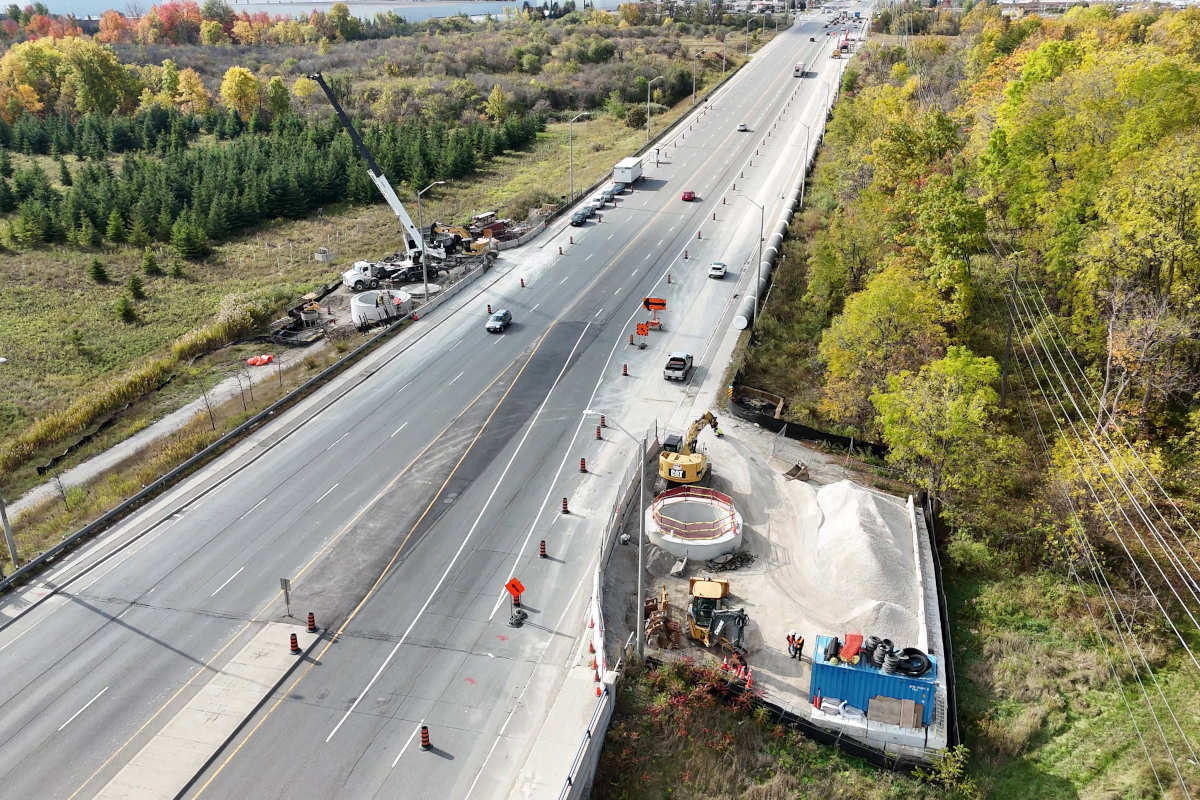
KOVACEVIC
I’ve seen that my whole career. That butting of heads. Even though in some areas you have minimal contractors, they worry about the competition. There is so much work for everybody. Municipalities with requirements for asset management reporting and rehab, it’s never going away. Like you [Kevin] said, everyone needs to work together. These two contractors should be good friends as they can all thrive in this business.
The biggest thing I have heard over the last few years and seen from contractors is concerns about risk. The jobs are getting more challenging. There are challenging situations. A lot of land rights issues and other things that hold up projects. How do you tackle that? They [contractors] always come back and ask if we are willing to take on more risk. The answer is: It depends. Certain managers can do that. Others aren’t willing to do that and point to the contract saying it’s in the contract and you’re the prime contractor and the risk is yours. But that’s not fair to the contractor because they are working for you trying to rehab your product and provide you with a better product.
BAINBRIDGE
At the end of the day, everybody needs to be at the table focused on the same objective. From a risk perspective, we try and do project risk workshops, we look at all the risks. Our No. 1 question is which party at the table – the owner, the consultant, the contractor or the product supplier – is in the best position [to manage] each individual risk. Some risks that get pushed to the private sector – the contractor, supplier or consultant – we may have very little control over. But on the utility owner side, they do. It really is properly dividing those risks to the groups who have the most capability to mitigate and manage that risk. Don’t make one party tackle a risk that they have little control or management over. If you get the risk allocated appropriately, that is when projects are the most successful and the most cost effective. It’s about getting that unified team together. The most successful jobs that I have seen undertaken are the ones where that has happened.
If we want to support and protect the industry, that is what needs to happen. Everyone has to do their job and not [push] off jobs to other parties at the table. I am encouraged to see product manufactures coming [to the table] even more in recent years. They have an obligation here, especially with these new technologies early in their industry application experience. They need to be at the table for implementation alongside the contractor as partners. I’ve seen some product suppliers that do a great job at this and others that don’t, they just give them the license, sell the product and they’re gone.
KOVACEVIC
The success of the product and the project is so huge because there has been reluctance to change for so long. All it takes is one or two bad projects to happen to a local contractor, and if that’s the only contractor, your progress is shot. Everyone local will say, “Did you hear what happened on that project? Oh, I don’t know if you really want to do that.”
BAINBRIDGE
What do we learn from it and then how do you move on? I am a big proponent to say there are no products that are bad products, there are only products that are applied in the wrong situation or installed poorly. Many products have an application, a role and a place to solve an issue. I think its short sighted to just say, “That is a bad product and that is a good product.” There might be a small percentage that are bad, but basically most products are good products if you use them appropriately, in the right circumstances and to solve the problems that they are good at solving and the quality of application is good.
KRINAS
From the asset owner/utility owner perspective, what I see is that the complexity of rehabilitation projects has increased over the years. I also see reluctance to take any risk at all. I don’t know if it’s a local industry observation for me, or an overall industry issue, but I see that utility owners have developed a low appetite for accepting risk. The desire is to find a solution that transfers risk or eliminates it completely.
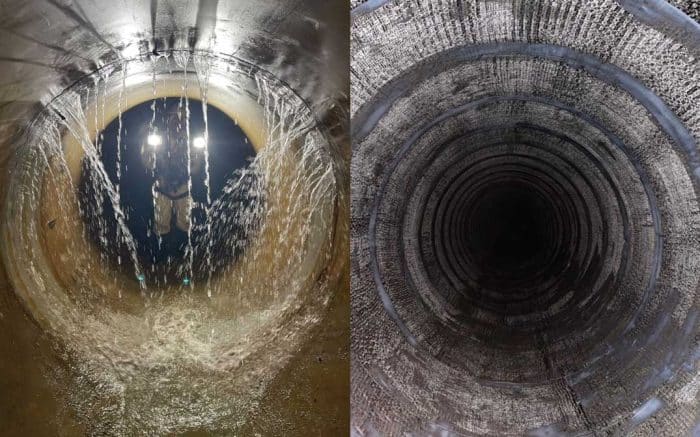
What are the growth opportunities for the trenchless sector?
KRINAS
There are a lot of experienced people in the industry who are now coming up for retirement and leaving the industry. New people are coming in. I don’t think that’s holding the industry back. I think that is an opportunity to advance the industry by educating. I think that the focus…should be to educate new engineers. Going into schools and talking about these new technologies. What I am thinking is the new wave of engineers who are going to be managing our assets [should be] aware of what’s applicable and all the trenchless technologies available. How do we make sure we have a quality product at the end of the day? It’s not just the product, it’s the installer. Manufacturers being diligent to make sure whoever they allow their products to be installed by follows through and follows quality control at every aspect of the process. If that doesn’t happen that will hold the industry back.
BAINBRIDGE
I agree that’s the one thing on the product manufactures and contractors – putting that proper process in place with good quality controls. It’s one of the questions we always ask when we look at new products. “Show me how you qualify an installer. What process, procedures, documentation, training are you giving to your licensees to install?” We want to see a thorough, thought-out process, that is structured. You don’t need a pilot project to do that. The second big piece is, “What is your program for support after you license them? How do you maintain a connection in perpetuity after that?” Those are the two keys that we want to see.
To your [Harry’s] point on school, we need to start pushing the market for contractors to find qualified people to install, new engineers and for municipalities and utility owners to hire people who want to be in this industry. It’s going to start in the schools. I think that NASTT’s student chapters are a solid place to start. NASTT is starting to do a lot more [with] support those chapters to get students to the No-Dig shows. They can experience, connect, network and understand if they want to be with a utility, contractors or engineers and see what is exciting about the trenchless industry. And to see the most enthusiastic people in the industry at these shows that can start encouraging to want to make a career here. We definitely need a human resource increase not just a technological increase.
Technology keeps pace with the growth, and they [new technologies and advancements in technologies] are coming into the market all the time. It’s the human resource piece that needs attention and there is opportunity to support and help this. There are things happening that I see, at least, with my involvement in NASTT.
KOVACEVIC
I remember not having a cell phone. The younger generation has grown with this technology, but the education piece in universities hasn’t. They all teach standard engineering. If you can offer courses now that show the technology that is available, suddenly you have all these students who say, “Wow I didn’t know that was part of it. I never would have thought to do that.” And at municipalities it’s a revolving door as older generations leave, you have to constantly educate. It’s about succession planning and that’s one area that municipalities have never been good at. There is never enough money to have somebody sitting next to the one leaving so that they can learn some of what they did.
BAINBRIDGE
I agree, succession planning is something we [Robinson Consultants] have been focused on as a firm for the last 5-6 years: Building a solid succession plan to make sure we’re growing the next leadership in the organization and maintaining our space in the trenchless technology industry and expanding what we are doing. But it takes investment.
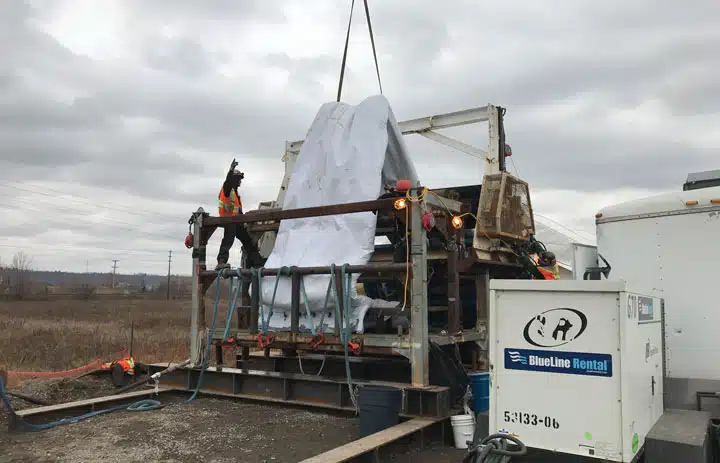
This education component speaks to the importance of shows like No-Dig North and others. Can you expand on that thought?
BAINBRIDGE
Keeping pace…as the market is moving fast with products. It is a lot of effort to keep up with the latest technologies, advancements, quality control, application process, etc. NASTT and the No-Dig North and No-Dig shows are vital for the entire industry to get involved, as attendees, speakers, exhibitors, sponsors, etc. I keep looking at NASTT’s membership and it should be 10,000 [members] or more, quite frankly across North America. It doesn’t make sense to me that it’s not, but I think it’s about getting the information and awareness out there.
Getting people to recognize the value of staying connected to the industry and the advantages that comes with being connected. Literally, in a couple of days attending either show, you can be fully brought up to speed on an annual basis with what is going on in the North American trenchless market and to a degree what is going on outside of North America. I don’t think there is another show you can attend where you’ll get better value. There are other shows where you’ll get some of this but not centralized on the trenchless industry. I encourage everyone in the trenchless market to engage [join] NASTT, there is a whole library there with more than 3,000 published papers on all kinds of technologies and projects that go back more than two decades. Further, the ability to come to this show under a membership saves money.
KRINAS
These kind of events – and I know municipalities have started cutting back on how many people they send to participate at and visit shows – I think this is where staff have an opportunity to connect with suppliers and experts in this industry. Start having one-on-one conversations about the problems and challenges they are facing. Gain perspective on what opportunities they have for finding solutions, where to go and who to talk to. That is, to me, tremendous value gained by a two-day conference. Every municipality that has an internal engineering group should make efforts to promote as much participation as possible to these types of events, especially when they are local. You are getting an opportunity to receive good, free consultation.
KOVACEVIC
They don’t see that this is education. Most cities have an education fund or allotment, but they look at a conference as being different than that, but that’s what you are doing. You are going to educate yourself and learn about something and try to figure out if it will be a benefit to your organization. It can’t always happen in your backyard.
BAINBRIDGE
That’s true. You can get a lot of free advice. Save yourself a lot of money. It also helps you to make jobs successful by being able to ask the right questions. Municipalities can make a call to action: Here’s my problem. You can pose that to contractors, consulting firms and suppliers. You throw that out there and ask them to get back to you with ideas and solutions.
I think your point about the differentiation between training and conferences is a good one Tony. I think maybe the market needs to recognize that and ask what we can do about it…that conferences aren’t necessarily training and maybe…what can we do that would push it on the true training side of things, so it makes it easier to attend. Specific training sessions as a part of conferences can help.

What are some of the biggest changes you’ve seen in the trenchless sector?
KOVACEVIC
The evolution and innovation of products from where it was, the ease of using the technology, the footprint of the technology. It’s no longer big box trailers rolling in. You can put this stuff in the back of a pickup truck or a van. With AI, you can get your pipe coded. You no longer need a certified operator to sit and code. You can run a camera through a lot quicker and the technology picks it up and provides you with 95 per cent accuracy. We [Burnaby] got into the LED curing and bought it pre-COVID…even the light technology that was there five years ago [has advanced] and now you look at everybody that is offering a light technology and they are all improving on it.
BAINBRIDGE
Every technology is advancing. Even CIPP is advancing. If you look at what we are lining now vs. what we were lining when it started. It doesn’t even matter what shape it is anymore, you can potentially CIPP line it with careful an appropriate engineering design. The advancement of engineering to understand technologies are pushing them into places it wasn’t before due to the greater understanding. Carbon fibre is another big thing that I’ve seen change in the last five years. The application and use of carbon fibre has [grown], and the way people understand it. That will continue to grow as the demand and need to solve problems continues to increase and grow. It’s not new technology but its advancing in the water and wastewater industry.
The other opportunities and things I have seen change are outreach into other markets. Coatings, for example, have been around for a long, time in oil and gas and other industries but just not significantly in water and wastewater. There is outreach to these other industries going on and translating that to water and wastewater market space.
KRINAS
In the last five years, what I see is acceptance now on trenchless technologies being not just a repair but a renewal option. I think that has come from the work we’ve done, and we are seeing those results, lasting results. Some of the reluctancy and questions from before are being answered by the industry. There are research engineers looking at the work that has been going on for years. It’s validating trenchless products and methods a good option. Take CIPP lining for water. I think Kevin lead that in the City of Hamilton, and that program is still ongoing. It’s now that we are seeing the benefits of water quality and reduction of failures across the city after all the lining we have done. And we are asked now to increase or output and do more because of recognition of the benefits that the program has achieved.
KOVACEVIC
A lot of technologies have a calculated design life. Now we are getting to the point where we are seeing stuff that has been in the ground for the length of design life, and you can see it’s lasting longer than just a 50-year design life. It’s like Harry said, it’s renewal not rehabilitation. We are going to get past that to where the trenchless product is going to be closer to what the design life of a concrete or vitreous clay pipe is. I think a lot of people are closed-minded saying it’s only 50 years. Right now, that’s what is there, but as we continue to inspect and do our reviews and see nothing deteriorating.
KRINAS
The other thing that is happening is that assets that were installed by traditional methods do not last as long as they were expected. PCCP is in the news, and we are starting to recognize that there are some issues there. And that prompts the question of: What is the solution? And the solution is trenchless rehab and inspection. We haven’t talked much about the expansion of the inspection side of the industry. It is giving us a better opportunity to understand what is going on. Watermain inspection technologies [had] a huge evolution over the past five years, and it is continuing because we have, as owners, identified a need that needs to be fulfilled.
We need to go back and start prompting the industry to communicate that these are the issues and our needs. We have lost that a little bit. I don’t know why but maybe it’s because we became comfortable with what was in the toolbox, and it worked well. We need to go back and start pushing a little bit, we need more cost-effective solutions to manage an ever-ageing infrastructure.
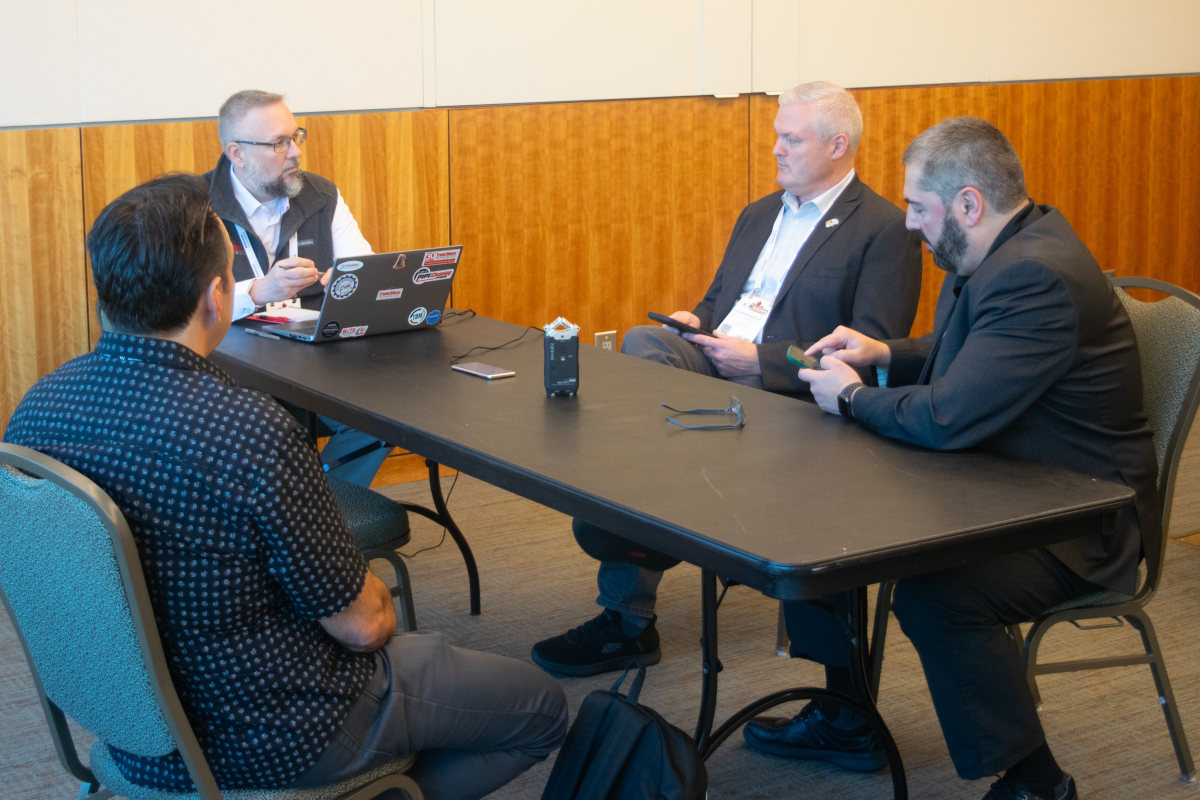
KOVACEVIC
You made a key point and that’s the inspection part. So much of trenchless is inspecting. Using a technology [CCTV] to inspect the asset, which we’ve gotten used to because CCTV has been around for so long. Others who haven’t been involved as long, don’t look at it like that is trenchless. But it is. Watermain inspection; a Smartball getting dropped in one location and picked up in another. That was never heard of before, and now it’s second nature.
KRINAS
The things that you see coming out. I had never heard of it. Yesterday, I attended a presentation, and they were talking about sewer flushing with a camera head on the nozzle capable of 360-degree 5K quality video. I was thinking that this is going to be huge in the inspection industry if it gets implemented.
BAINBRIDGE
Looking at the last five years the inspection technologies have grown considerably, especially on the water side. I think you’ll see a continued explosion of that, the same way we did many years ago with CIPP when the patents started running out. The original inventors of the technologies…allowed limited accessibility. We’re starting to see in the inspection industry patents start to run out and you see an increase in service providers, picking up and advancing it further. And everybody is advancing it differently and pushing further. That’s a huge benefit for municipalities on the management of the infrastructure, especially some of the big pipe infrastructure. It’s not small decisions you are making as they have large implications, including millions of dollars. Are we putting money in? When are we putting money in? When do we do it? There is not an endless supply of funding, so you must make balanced decisions on what infrastructure needs attention and when. . The more these technologies can help you manage that decision – because of the level and accuracy of the information they provide – garners a huge benefit.
I’ve also seen municipalities bringing capacity in-house to their utility or municipality to do trenchless work. Whether it be inspection or rehabilitation. That’s an opportunity for owners when the market is straining to provide support. They will never be the experts doing the big difficult projects, but they can take away all the small stuff and take that workload off the market. If I go back to when I started, nobody was doing that. I didn’t know of a single municipality that had in-house capacity to do that. Maybe CCTV inspection and even that was very little.
KOVACEVIC
There was always a challenge to find funding for that one truck. The question was, why would we do this? We have contractors. But you are paying that contractor an hourly rate to come when they are available. My response was, we need them now and we need them on our clock, we can’t wait until they are available.
BAINBRIDGE
That’s a huge advantage that I saw. When I started asking municipalities – that were brining inhouse the rehab side – why they were doing that, they said responsiveness. They could get a spot repair liner in there right now. There is enough knowledge and understanding [available] that they can train their staff just as well as a contractor can get trained by a product supplier.
KRINAS
That’s one of the biggest challenges I have, the in between needs. Is it an emergency and I need to react now, or is it a capital project that will be done in five years? As a municipality, we haven’t prepared for those assets falling in that lifecycle stage.
KOVACEVIC
To me, even in that in between stage, it’s about liability to the city. Nowadays, everybody is taking everybody to court for whatever reason. Even if that repair could wait two-three months, I’ll have other things come up that push that back. And then it can become a big problem.
BAINBRIDGE
Your options for what to do about a problem start to disappear. Early on you have a lot of options. I don’t think the industry should be afraid of [municipalities bringing in a small amount of capacity] there is so much work going that you’ll never take that away. It does give them a lot of flexibility. There can be an [internal] operation and maintenance rehab program and an [external] capital rehab program that can work well together.
Even on the new installation side, there are a lot of advancements in the industry. You look at where microtunnelling is right now and the work they are doing with larger diameters, compound curve drives and materials they can go through. It’s a big advancement, and this is going to be of huge help to the industry where there’s new growth or new infrastructure needed in urban areas. HDD is the same thing, the advancement of the pullback, the distances they can go. That new installation side has really advanced in the last number of years.
Mike Kezdi is managing editor of Trenchless Technology Canada.

